CBC
Sun, September 24, 2023
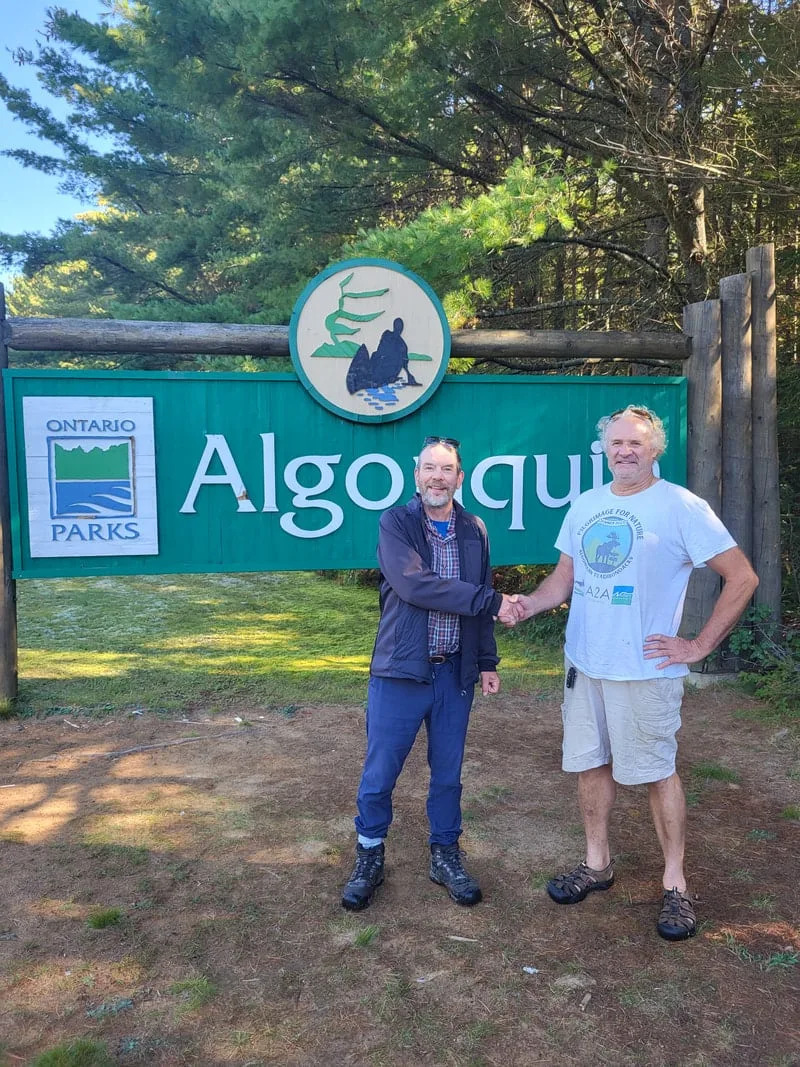
After 36 days on the trail, Jamie Findlay, left, completed the A2A Challenge Walk last Saturday.
(www.a2acollaborative.org - image credit)
Two decades ago, a moose named Alice migrated from the Adirondack Park in New York state to Algonquin Park.
The 640-kilometre voyage, tracked by a team of researchers, saw her crossing busy highways and swimming the St. Lawrence River en route to the Ontario provincial park.
Nature Canada's storyteller and grant writer Jamie Findlay admitted he doesn't know exactly what motivated Alice to travel all that way, but he was inspired by her transnational trip.
"The journey of Alice the moose just kind of captured, symbolized this need on the part of wildlife to move and travel," Findlay said.
"And I thought it would be really neat to just follow in the footsteps of Alice the moose and do that route,"
Last week, Findlay completed the Adirondacks to Algonquin (A2A) trail, which follows a winding network of hiking paths, highways and back roads in honour of Alice's journey.
The route was conceived by The A2A Collaborative, a nonprofit that aims to connect and preserve the ecological corridor between the two parks.
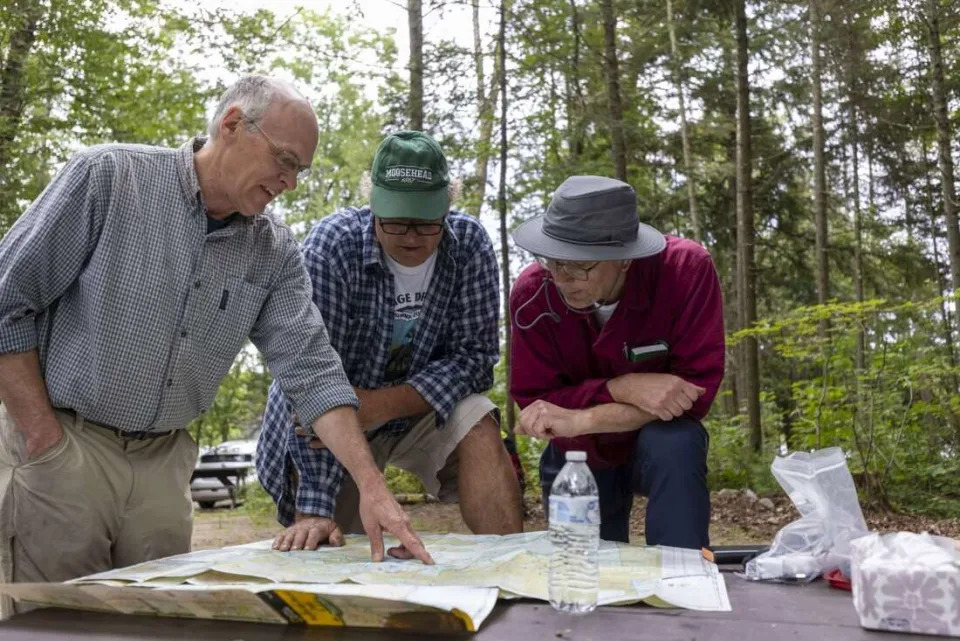
From left to right, Bill Brown, Bill Barkley and Jamie Findlay plan the first leg of the trek. (www.a2acollaborative.org)
'Nature is flow'
Findlay didn't cross Highway 401 or swim the St. Lawrence but said he's gained an appreciation for Alice's lengthy migration.
"We create parks and protected areas for wildlife and we think that they stay in these places and that they're happy there," he said, adding that many animals, especially large mammals, move across human-made barriers, like roads, railways and agricultural development, often to their demise.
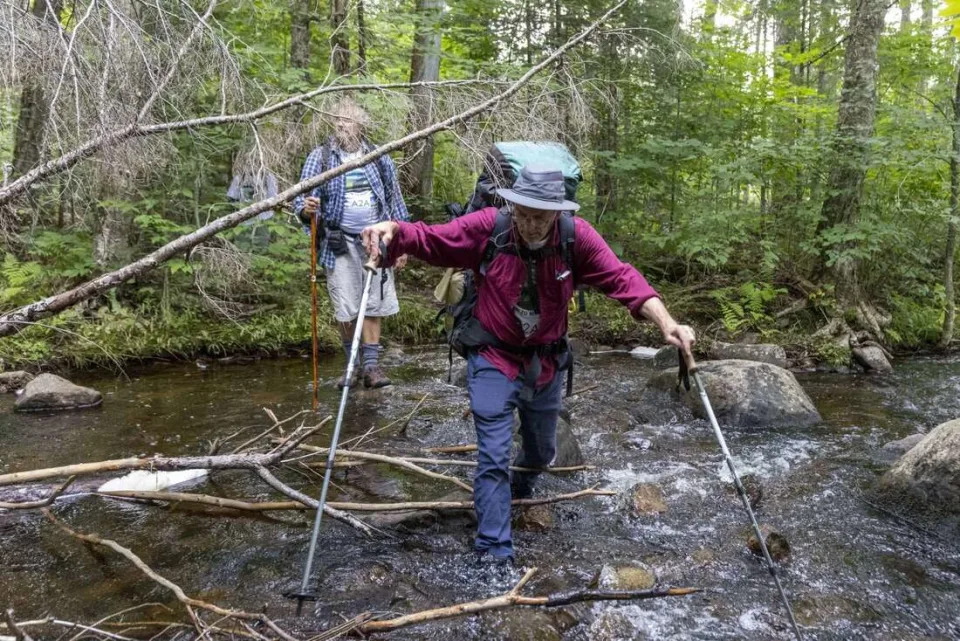
Findlay described being on the trail as 'life raised to the second power,' adding that every emotion he experienced, from boredom to excitement, was amplified. (www.a2acollaborative.org)
"Nature is flow — living things have to move and circulate and intermingle and it's hard for a lot of the animals to do that in the sort of environment they live in."
A 'patchwork quilt' of terrain, stories
Over 36 days, Findlay walked, cycled and paddled his way along the "patchwork quilt" of terrain, often bringing friends along for days or weeks at a time. He and a friend even hitched a ride on a horse and buggy on a section of country road in upper New York state.
"We figured that was a legitimate means of travel because it wasn't mechanized," Findlay said.
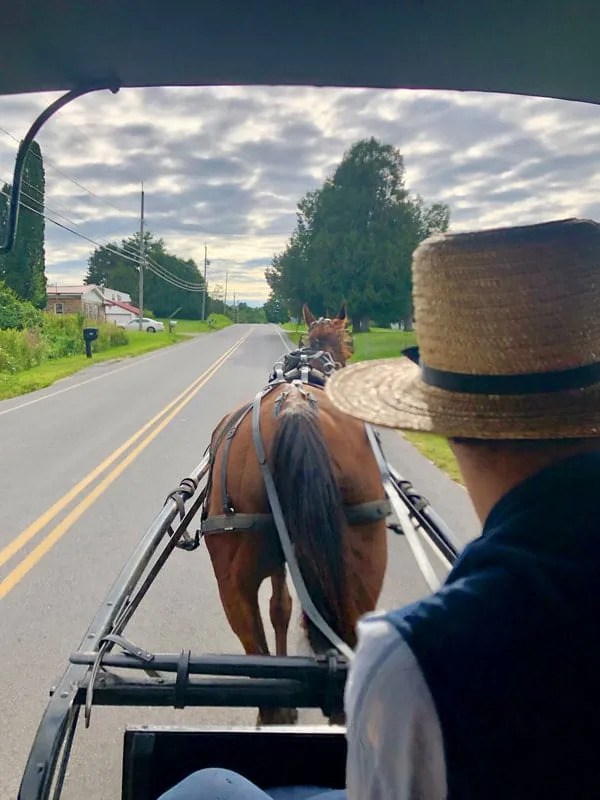
Findlay and Barkley got a ride in a horse and buggy in upper New York state. (www.a2acollaborative.org)
Findlay and his companions stopped at parks and schools between legs of the trek to share stories from the trail.
"Without exception, people were interested in what we were doing and they wanted to know more," he said.
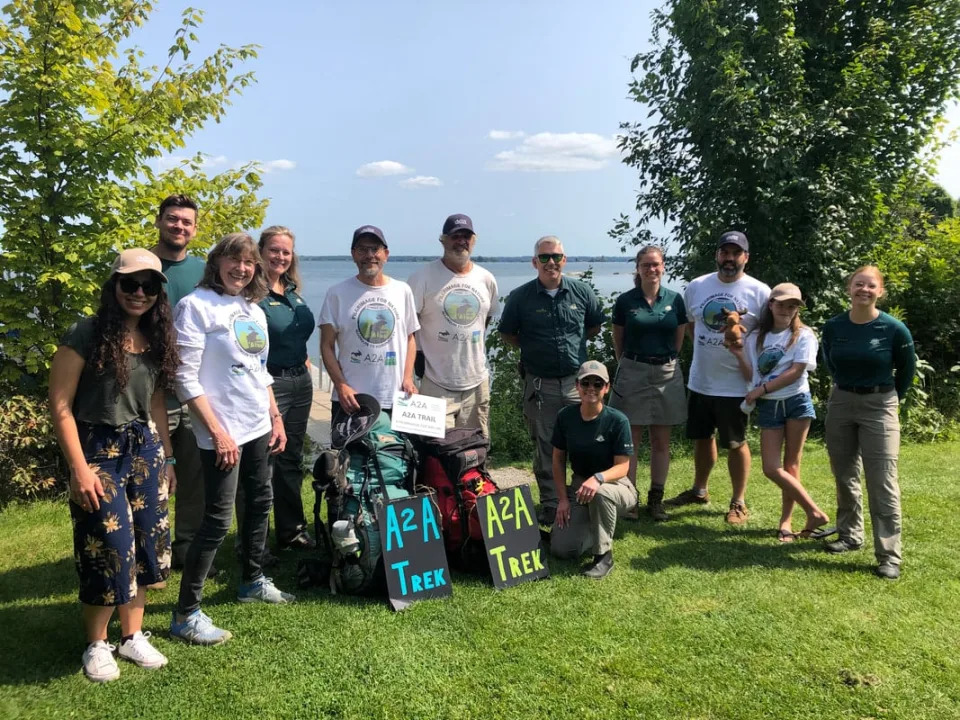
Shortly after crossing the border, Findlay and Barkley held a talk at Thousand Islands National Park. (www.a2acollaborative.org)
"I hope to get people interested in this region," he said. "I'm hoping that people will be inspired to explore it and protect it."
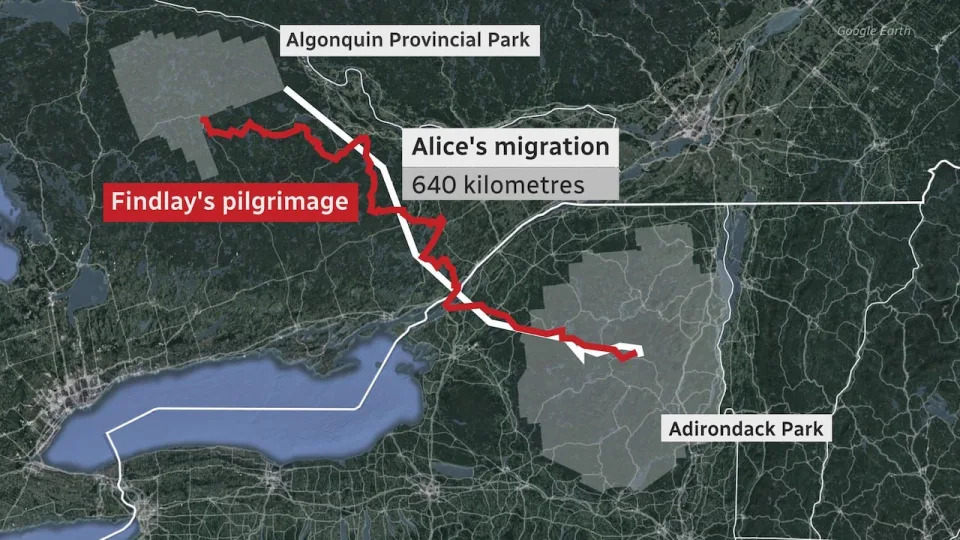
The route Findlay followed. (CBC News Graphics)
Two decades ago, a moose named Alice migrated from the Adirondack Park in New York state to Algonquin Park.
The 640-kilometre voyage, tracked by a team of researchers, saw her crossing busy highways and swimming the St. Lawrence River en route to the Ontario provincial park.
Nature Canada's storyteller and grant writer Jamie Findlay admitted he doesn't know exactly what motivated Alice to travel all that way, but he was inspired by her transnational trip.
"The journey of Alice the moose just kind of captured, symbolized this need on the part of wildlife to move and travel," Findlay said.
"And I thought it would be really neat to just follow in the footsteps of Alice the moose and do that route,"
Last week, Findlay completed the Adirondacks to Algonquin (A2A) trail, which follows a winding network of hiking paths, highways and back roads in honour of Alice's journey.
The route was conceived by The A2A Collaborative, a nonprofit that aims to connect and preserve the ecological corridor between the two parks.

From left to right, Bill Brown, Bill Barkley and Jamie Findlay plan the first leg of the trek. (www.a2acollaborative.org)
'Nature is flow'
Findlay didn't cross Highway 401 or swim the St. Lawrence but said he's gained an appreciation for Alice's lengthy migration.
"We create parks and protected areas for wildlife and we think that they stay in these places and that they're happy there," he said, adding that many animals, especially large mammals, move across human-made barriers, like roads, railways and agricultural development, often to their demise.

Findlay described being on the trail as 'life raised to the second power,' adding that every emotion he experienced, from boredom to excitement, was amplified. (www.a2acollaborative.org)
"Nature is flow — living things have to move and circulate and intermingle and it's hard for a lot of the animals to do that in the sort of environment they live in."
A 'patchwork quilt' of terrain, stories
Over 36 days, Findlay walked, cycled and paddled his way along the "patchwork quilt" of terrain, often bringing friends along for days or weeks at a time. He and a friend even hitched a ride on a horse and buggy on a section of country road in upper New York state.
"We figured that was a legitimate means of travel because it wasn't mechanized," Findlay said.

Findlay and Barkley got a ride in a horse and buggy in upper New York state. (www.a2acollaborative.org)
Findlay and his companions stopped at parks and schools between legs of the trek to share stories from the trail.
"Without exception, people were interested in what we were doing and they wanted to know more," he said.

Shortly after crossing the border, Findlay and Barkley held a talk at Thousand Islands National Park. (www.a2acollaborative.org)
"I hope to get people interested in this region," he said. "I'm hoping that people will be inspired to explore it and protect it."

The route Findlay followed. (CBC News Graphics)
No comments:
Post a Comment